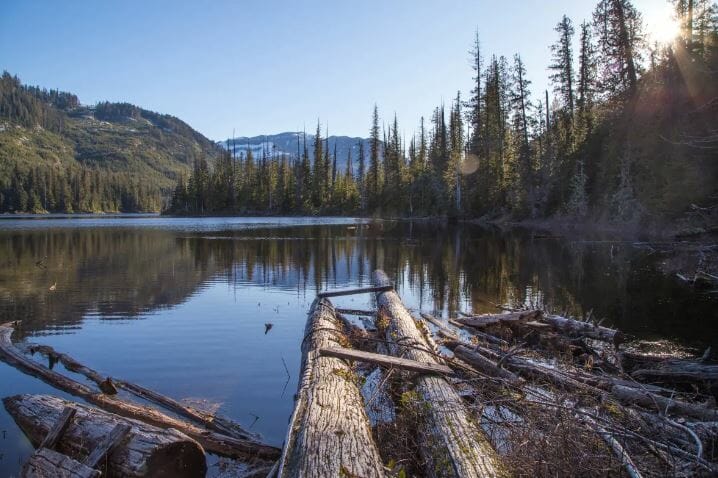Estimated Reading time

3 Mins
Na̲nwak̲olas Council Developing New Protocols to Protect Cultural Western Red Cedar

To many coastal First Nations throughout present-day British Columbia, the Western Red Cedar is known as the “Tree of Life,” and has for millennia played a vital role in the lives of coastal peoples.
In recent years, unsustainable logging practices and the effects of climate change have contributed to the growing precariousness of Western Red Cedar stands across B.C., posing a direct threat to this culturally, ecologically, and economically significant species.
A recent article by CBC Unreserved highlights how Nanwakolas Council, an alliance of five member Nations on B.C.’s south central coast and northern Vancouver Island, is working to identify and protect Western Red Cedars in their territories.
Authors Serena Renner and Ayesha Ghaffar explain how local Chiefs, such as Tlowitsis First Nation Chief John Smith, first “started noticing the lack of ‘large cultural cedars’ — the massive ones suitable for making canoes, house posts, and poles — about 20 years ago.”
Chief Smith, along with other local Chiefs and community leaders, responded by launching the Large Cultural Cedar Project in 2019 to survey large cedars in their territories. Since that time, the program, managed by Nanwakolas Council, has identified hundreds of large cedars for protection.

The plight of Western Red Cedars, explain the authors, is also being closely monitored by people like Gina Thomas who runs the Tlowitsis Nation’s Guardian Watchmen Program. Standing in a Western ForestProducts cutblock near Rooney Lake on Vancouver Island, Thomas points to the parched and nutrient-poor soil with concern. Increasingly hot and dry summers, explains Thomas, means “these sites are getting too dry for cedar. That means we’re not getting any cedar regenerating here.”
Na̲nwak̲olas Council president Dallas Smith says that growing awareness about the harmful effects of climate change has added urgency to the Large Cultural Cedar Project, prompting the Council to draft new policies to demarcate certain stands of old-growth cedar in their territories off-limits to harvesting. They aim to have the new protocols in place by this summer.
To Smith, protecting Red Cedar not only has ecological and cultural merits—ensuring their long-term sustainability is also intricately tied to the economic well-being of First Nations people in the region where Red Cedar is used in local construction projects or transformed into valuable artwork.
“We take the trees out of this equation and there’s a ripple effect we can’t keep up with,” said Smith in the article. “If our forests become poor, like our communities, we’re going to hit a point of no return.”
We take the trees out of this equation and there’s a ripple effect we can’t keep up with. If our forests become poor, like our communities, we’re going to hit a point of no return.
Beyond working to identify and preserve large cedar trees in their territories, Na̲nwak̲olas Council is also working to devise “additional measures [to] increase habitat protection around old-growth and conserve second-growth trees chosen for ‘recruitment.’ These trees are designated to become future large cultural cedar, or in [Gina] Thomas’s words ‘kids becoming adults.’”
Echoing this sentiment, Thomas’s daughter, Alexandra, is following in her mother’s footsteps by pursuing a forestry degree at UBC, with the goal of buying and managing a small plot of land with her mother upon obtaining her forestry license.
“She imagines a working forest that combines Indigenous and western practices,” explain the authors. “Think strip barking, the careful harvest of cedar bark for weaving, as well as silviculture, a modern strategy for controlling the growth, composition, and ecological function of trees.”
As quoted in the article, Alexandra believes that “we can do things differently, instead of clear-cut everything, replant, harvest in 80 years. We’re realizing we don’t have the trees to do that anymore. We don’t have the time to do that anymore.”
